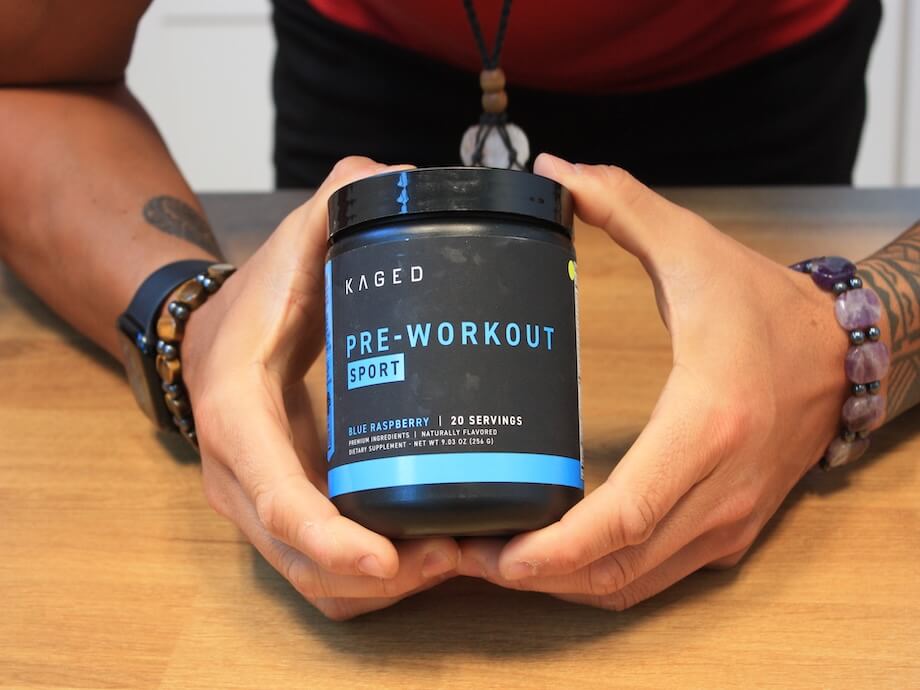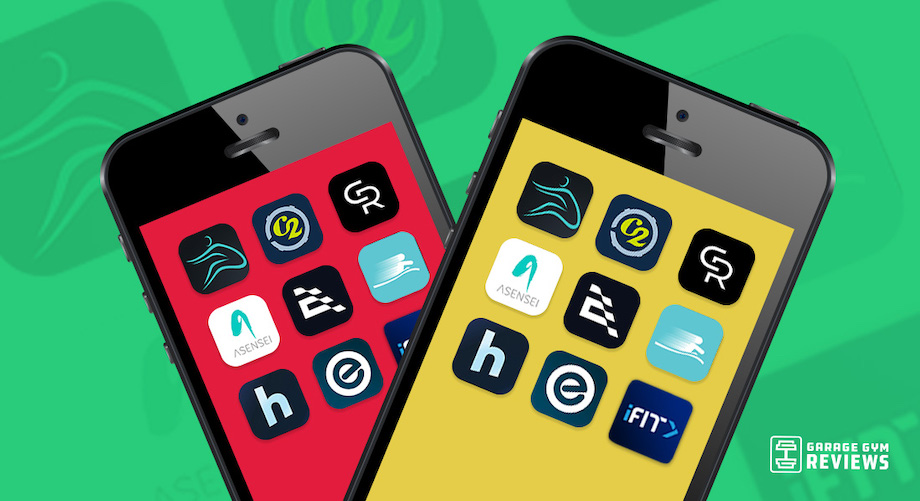After personally testing 40 meal delivery services, we named Diet-To-Go the best meal delivery service for weight loss and the best low-calorie meal delivery service.
We like it because it can accommodate a wide range of diets, with meals featuring fresh ingredients prepared in advance, so it requires little effort from you—at least when it comes to cooking or grocery shopping.
If you visit Diet-To-Go’s website, you’ll see five prepared meal plans, each built around different types of foods with varying macro breakdowns (calories are pretty similar across the board, though).
I—a functional nutritionist—will break down what you can expect from the Diet-To-Go meal plans to help you decide which is best for your nutritional needs.
Medical disclaimer: This article is intended for educational and informational purposes only. It is not intended as a substitute for medical advice. For health advice, contact a licensed healthcare provider.
Diet-To-Go
Diet-To-Go
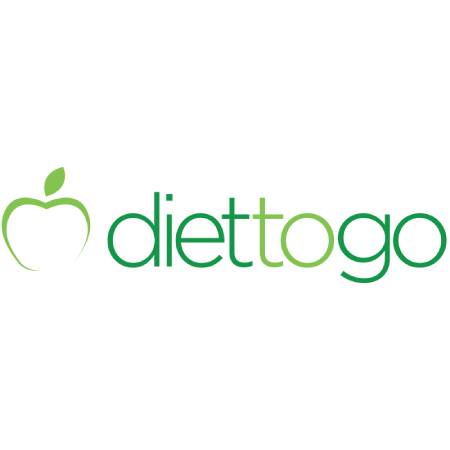
Product Highlights
- Meal delivery service with 5 diet plans
- Ready to heat chef-prepared meals
- Mediterranean diet and low-carb options
- Choose up to 21 meals per week
- Customized meal plans available
- New meals every 5 weeks
Pros & Cons
Pros
- Appeals to a variety of diets
- Meals are ready to eat in 3 minutes
- Can order all 21 meals for the week
- Meal plans are curated for you, but you have the option to customize it
Cons
- Very limited customization
- Doesn’t offer any organic options
- Calories are very low on the standard plan
Bottom Line
Diet-To-Go accommodates a number of dietary preferences and restrictions, but the menu doesn’t have as much variety as some of the other programs. These are heat-and-eat meals, so they’re ready to eat in three minutes.
What is Diet-To-Go?
Diet-To-Go is a meal delivery service that’s developed specifically for weight loss. All meals are low-calorie, portion-controlled, and come fully prepared—they’re cooked in Diet-To-Go’s kitchens and come to you ready to heat in the microwave or oven.
How Does Diet-To-Go Work?
Like other meal delivery services, Diet-To-Go operates on a subscription model. You choose one of the five available meal plans and decide how many meals you want; your choices are two or three meals a day on five or seven days of the week.
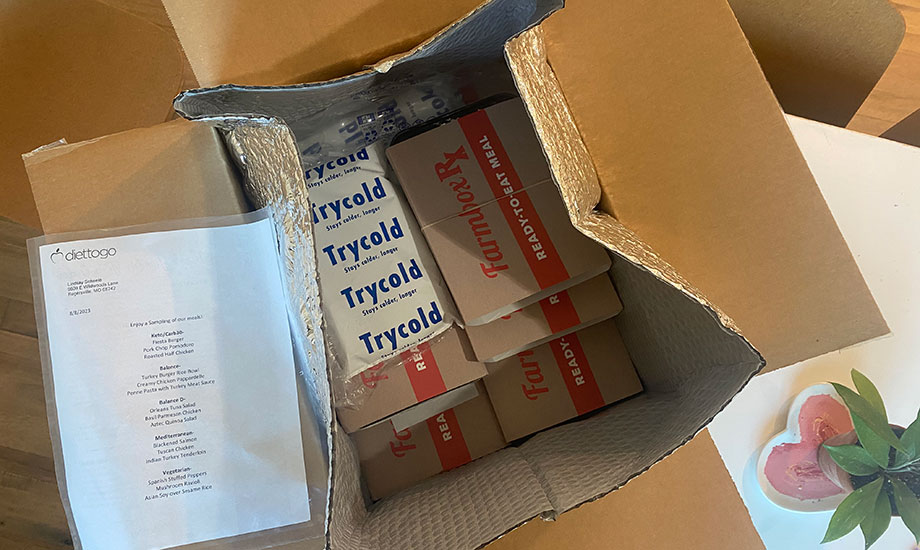
Once you choose your meals, your subscription will kick in, and you’ll get the specified number of meals delivered to your door weekly. Since all meals are pre-made, there’s not much to do once they arrive—just heat them and eat them.
Diet-To-Go works off a rotating, five-week menu. The meals are automatically populated for you each week, but you can go in and make swaps based on your personal preferences or dietary needs. If you don’t make any changes, you’ll get the standard menu of meals, so every sixth week, you’ll start over at the beginning of the menu.
Shipping frequency depends on where you live. If you’re close to Diet-To-Go’s facilities, meals will ship fresh twice a week. If you live further away, meals will be flash-frozen to preserve freshness, packed with dry ice, and shipped once a week. If you live in the Washington DC Metro area, Baltimore, New Jersey, San Francisco Bay area, or the greater Los Angeles area, you may be able to pick up your orders instead of having them shipped.
While this is a subscription service, you’re not tied into a long-term contract. Skipping an order or canceling altogether is a straightforward process—you can email the company or do it through your online account.
Diet-To-Go: Plans and Pricing
As mentioned, there are five main plans for Diet-To-Go: Balance, Balance-Diabetes (Balance-D, for short), Keto-Carb30, Mediterranean, and Vegetarian.
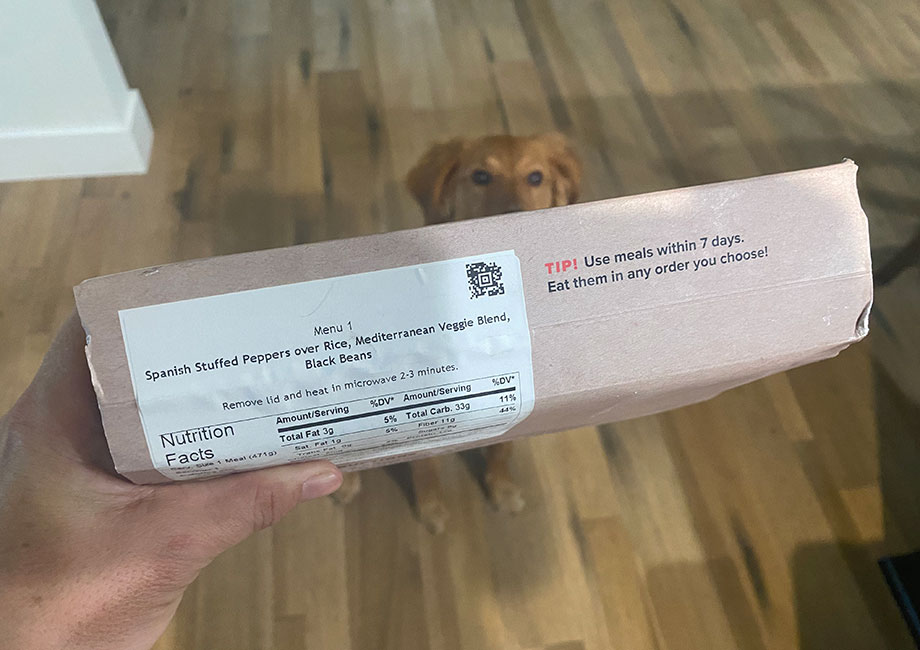
While the plans don’t offer the largest selection or variety of meals (there’s overlap between several Diet-To-Go menus), you’ll get a five-week rotating menu for each. It’s also worth noting that none of the plans are completely gluten-free.
Balance
Balance is Diet-To-Go’s most popular plan. It excludes red meat and pork, but doesn’t follow a specific diet beyond that; instead, it’s low-calorie and “controlled for” sodium, carbs, fat, and cholesterol. Diet-To-Go doesn’t specify a cutoff point for these nutrients, but based on the menu, it looks like you’ll get around 400 to 450 calories, 40 to 50 grams of carbs, 20 to 40 grams of protein, and 10 to 20 grams of fat per meal.
Examples of meals on the Balance menu include Scrambled Eggs Rancheros, Salmon Cake Over Rice Pilaf, Black Bean and Feta Cheese Wraps, and Turkey Tamale Pie.
Balance-Diabetes
Balance-Diabetes (or Balance-D, as it’s often called) follows a similar structure as the balance plan; however, each meal follows the American Diabetes Association’s (ADA) guidelines for carbohydrates, protein, and fat. Each meal has no more than 45 grams of carbs and at least 15 grams of protein. Calorie counts are similar to the regular Balance plan, with about 400 to 450 per meal.
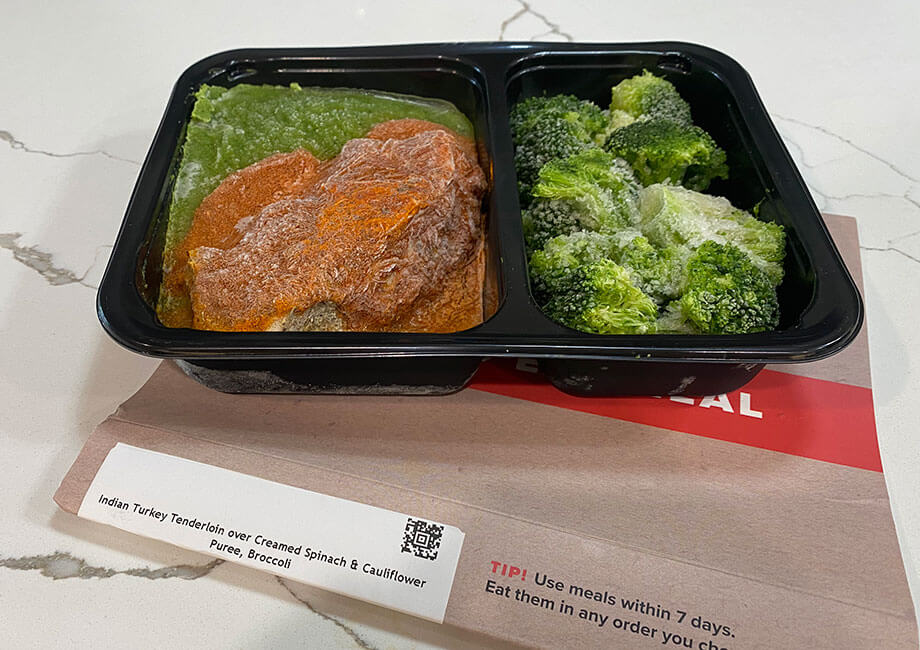
Some example meals include Porcini Mushroom Chicken, Blackened Salmon, and Harissa Salmon.
Keto-Carb30
The Keto-Carb30 plan focuses on restricting net carbs—calculated by subtracting fiber from total carbs—to no more than 30 grams per day. It replaces carbohydrates with fats and is heavy on meat, cheese, and eggs. This low-carb plan doesn’t allow fruit, bread, or sugar.
You can expect to find meal options like Veal Parmesan, Chicken Cordon Bleu, and Scrambled Eggs Benedict, each having about 300 to 400 calories and less than 15 grams of carbohydrates.
While Diet-To-Go says it’s “keto-friendly,” the carbs in each meal are a little too high to be considered strict keto. For reference, a typical keto diet allows no more than 20 grams of net carbs per day.
RELATED: What is the Keto Diet?
Vegetarian
The Vegetarian plan is similar to the Balance plan, but without meat and fish—it does include eggs and dairy. All meals are calorie-controlled to around 300 to 400 calories per meal, and most of the protein comes from dairy, eggs, beans, and some soy. Protein is a bit low on this plan, with the meals maxing out around 20 grams; most contain somewhere between 10 and 15 grams. All meals are low-sodium, low-fat, and low in cholesterol, and contain only a moderate amount of carbohydrates—around 50 grams max.
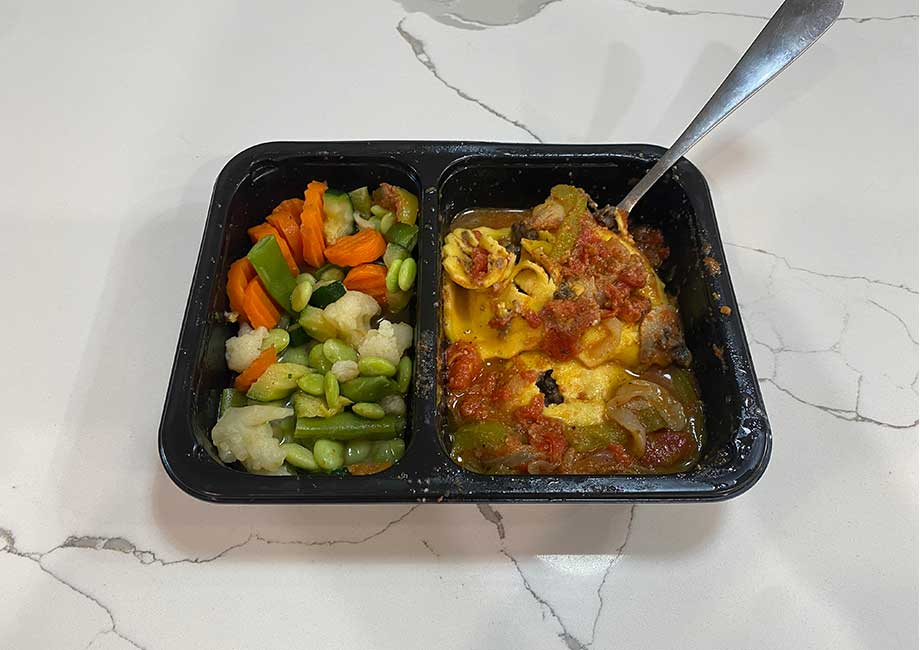
Some example meals from the Vegetarian menu include Stuffed Shells with Roasted Pepper Sauce, Chocolate Zucchini Bread, and Black Bean Chili.
Mediterranean
The Mediterranean plan includes heart-healthy meals rich in whole foods like vegetables, fruits, nuts, beans, grains, fish, and lean meats. It follows the structure of the Mediterranean diet, which is heavy on healthy fats but doesn’t focus on calories or limiting any specific macros. That said, meals contain around 300 to 400 calories and typically have at least 20 grams of protein.
RELATED: Heart Healthy Meal Delivery
Mediterranean Tapas, Greek Pasta Salad with Tuna, and Herb-Crusted Tilapia are examples of meals on the Mediterranean plan.
Meal Cost By Plan
Most meal plans are the same price, but the Keto-Carb30 is a bit more expensive than the rest. Below, you’ll find the prices per week and per meal, but this doesn’t include a discount you’ll typically get for your first week.
Also, keep in mind this doesn’t include the shipping cost, which is $19.98 per week.
| Meal Plan | Price per meal (10 meals) | Price per week (10 meals) | Price per meal (15 meals) | Price per week (15 meals) | Price per meal (21 meals) | Price per meal (21 meals) |
| Balance | $13.90 | $138.99 | $10.87 | $162.99 | $9.71 | $203.99 |
| Balance-D | $13.90 | $138.99 | $10.87 | $162.99 | $9.71 | $203.99 |
| Keto-Carb30 | $15.20 | $151.99 | $12.00 | $179.99 | $10.76 | $225.99 |
| Mediterranean | $13.90 | $138.99 | $10.87 | $162.99 | $9.71 | $203.99 |
| Vegetarian | $13.90 | $138.99 | $10.87 | $162.99 | $9.71 | $203.99 |
Who Is Diet-To-Go For?
Diet-to-Go is super convenient for people who want to lose weight by improving their diet but don’t have the time to cook meals, according to registered dietitian Perry Nix, R.D., L.D., who says these diets can promote short-term weight loss.
However, Perry also notes that most Diet-to-Go meals contain between 300 to 500 calories, which isn’t enough to sustain healthy, long-term weight loss. While this can be a good option in the short term, it may not be something you can (or should) stick to for more than a few months.

In short, Diet-To-Go is for:
- Anyone who wants the convenience of premade, portion-controlled meals
- Dieters who need help reaching their weight loss goals
- People who need some support with healthy eating and maintaining a healthy weight
- Diabetics or pre-diabetics who need help controlling their blood sugar levels
- Anyone looking to eat healthier to support their overall wellness
Diet-To-Go Meal Plans: Final Thoughts
Five Diet-To-Go meal plans restrict calories to about 300 to 450 per meal. While none of them are weight loss programs per se—you don’t get access to nutritionists or health coaches who can help keep you on track—they can be a good kick-start for those trying to control portions and eat healthier.
Pros:
- Requires minimal effort since meals are premade
- Covers several different diet types
- Can adjust menus based on your preferences
- Menus rotate each week for five weeks for some variety
Cons:
- Plans are very low in calories
- No guidance from nutritionists
- Shipping is costly
- Menus can be limited
Diet-To-Go Meal Plans: FAQs
How much does Diet-To-Go cost?
It depends on which meals you pick, but on average, you’ll spend about $142.99 per week for 21 meals (the largest plan), and another $19.98 for shipping. This breaks down to $11.19 per meal with shipping included.
Is Diet-To-Go worth it?
It depends. The meals are priced reasonably, so if you eat out a lot or don’t like to cook, this may save you money—and you can’t beat the convenience factor of pre-made meals. However, the calories for some of the plans are low, so if you’re active and need to supplement with other meals and snacks, you may pay more overall.
Our expert tester, Lindsay Scheele of Garage Gym Reviews Everything, tried meals from the Vegetarian and Keto-Carb30 plan and found that some meals had appropriate portions (in some cases more than enough) while some didn’t, and the taste was also inconsistent. While she didn’t have an unpleasant experience overall, she did state that she probably wouldn’t order Diet-To-Go again.
Either way, it’s convenient, and that alone could make it worth it for many.
Do you lose weight on Diet-To-Go?
Diet-To-Go is designed for weight loss, but there are no guarantees. Ultimately, it will depend on how many calories you’re eating and whether or not you’re incorporating other healthy habits, like regular exercise and a good sleep schedule, in your lifestyle.
RELATED: Cardio Vs Weight For Weight Loss
These statements have not been evaluated by the Food and Drug Administration. This product is not intended to diagnose, treat, cure, or prevent any diseases.



